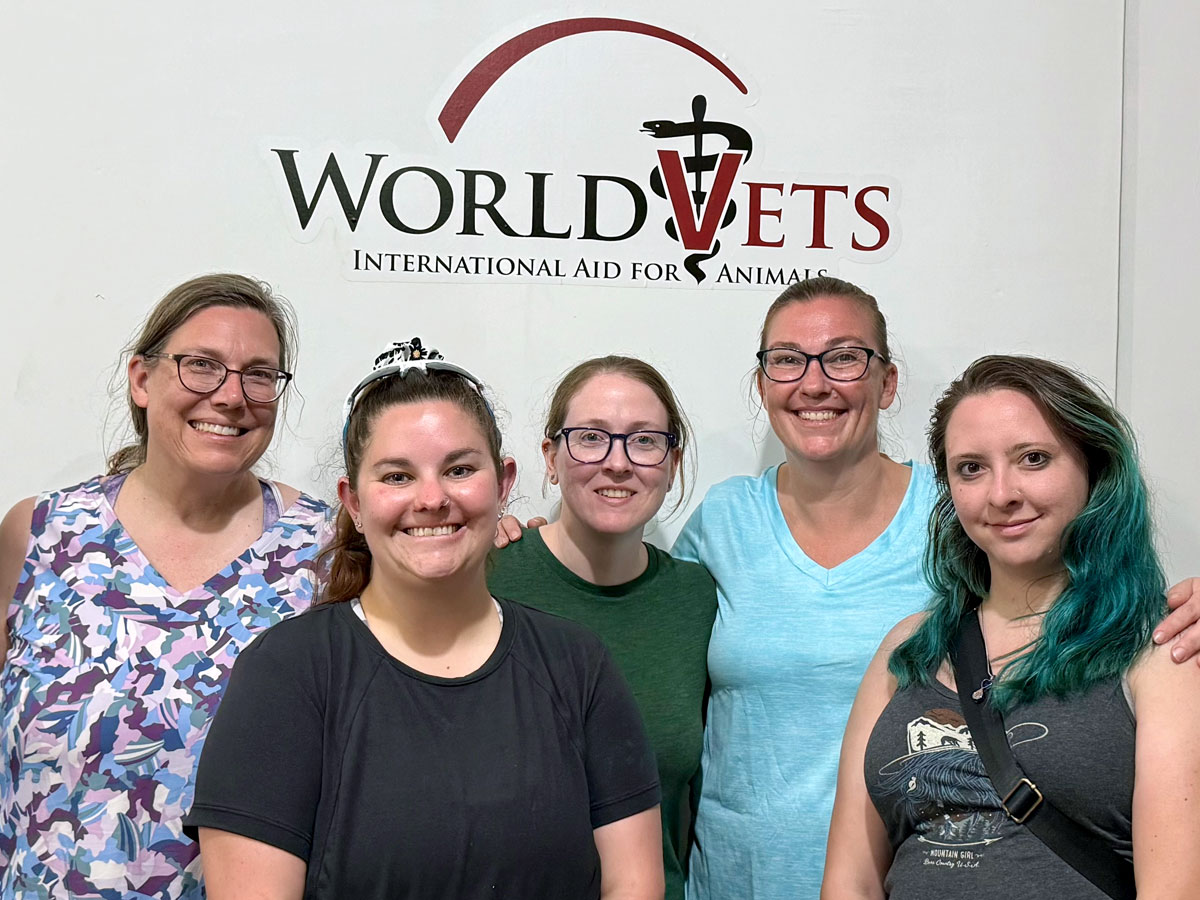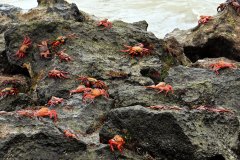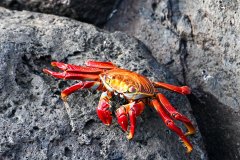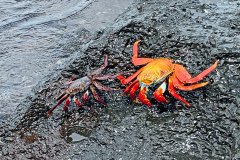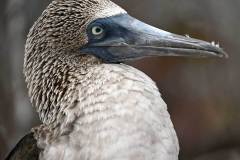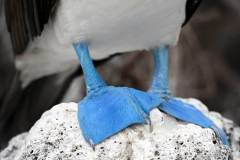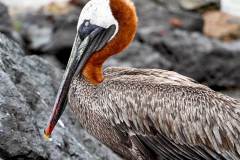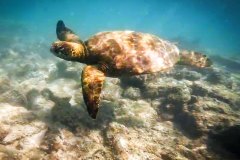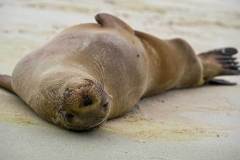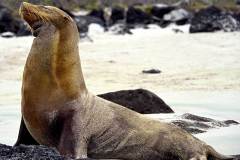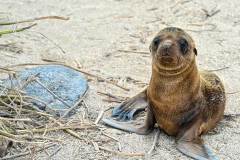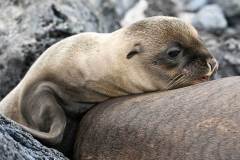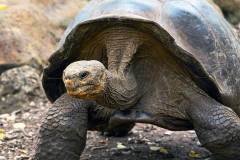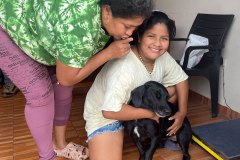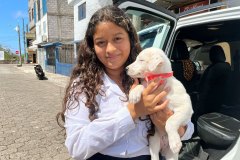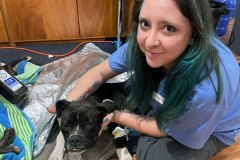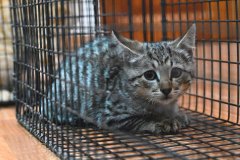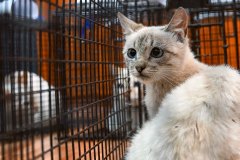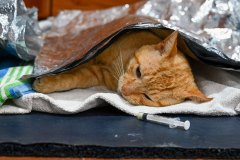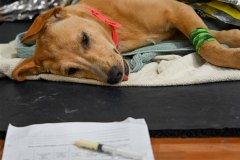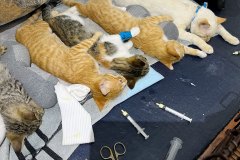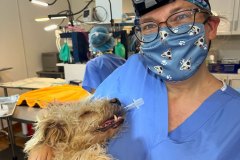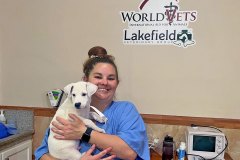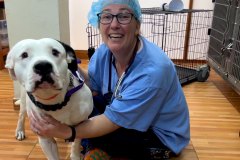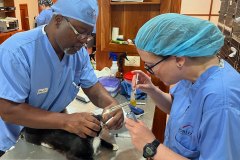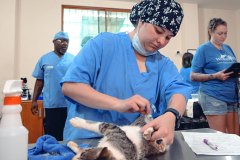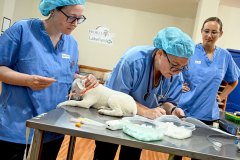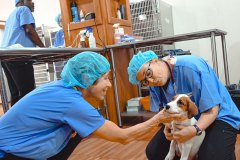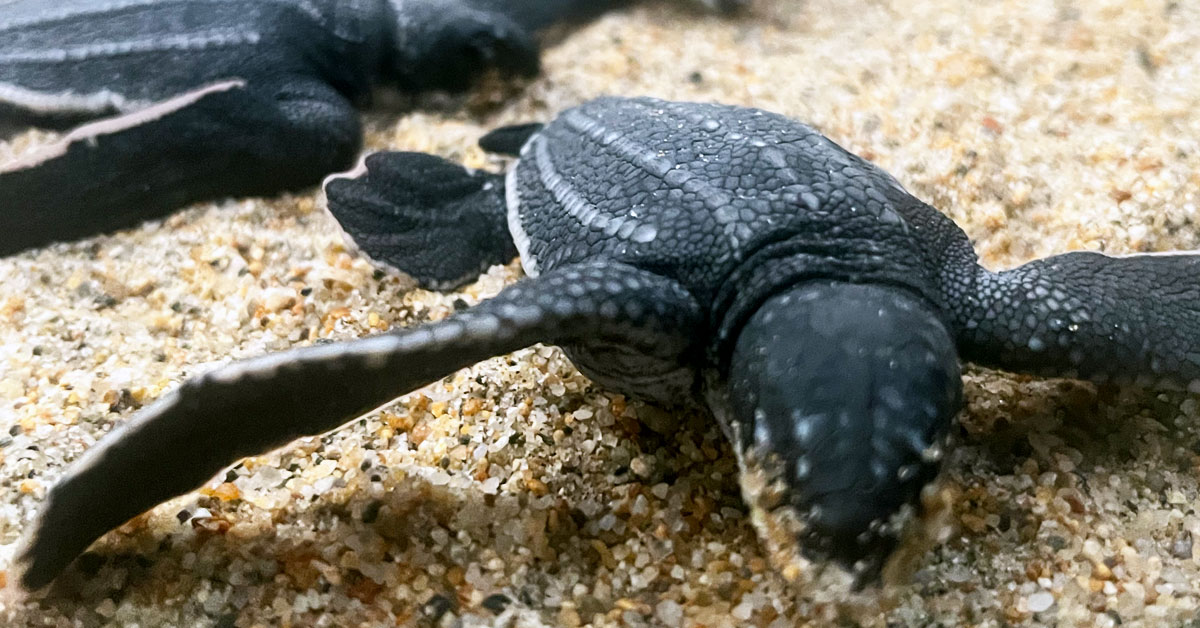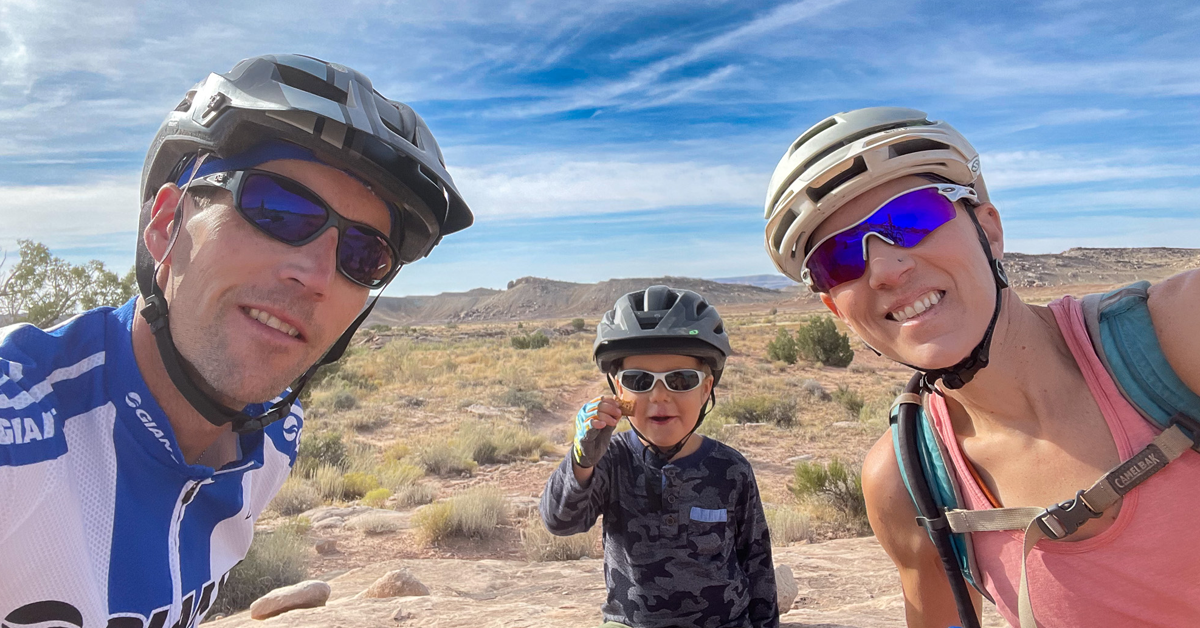A Journey to Protect Animals in the Galápagos
A heartfelt mission sparked by loss leads to a 3,000-mile journey to create a positive change in the world.
By Dr. Bonnie Abbott
_________________
Honoring a Dying Sister’s Wish
Two years ago, I experienced the profound loss of my last living sister to Huntington’s disease. Holly was bright, funny, and full of life. She cared deeply for others and the world around us. Shortly before her death, Holly asked me to use the remainder of her estate to spread positivity—not a surprising request, given her big heart. “Just do some good in the world where it makes a difference,” she said.

The Start of My Journey
My three sisters and I loved the thrill of traveling. We shared many adventures, from road trips across the U.S. and summiting Colorado’s 14ers to exploring the majestic Mt. Kilimanjaro and the Serengeti Plains in Africa, touring the stunning coastlines of Spain, and discovering the beauty of the Netherlands. Even though my sisters have passed on, I thought of an adventure I could take to honor my sisters and fulfill Holly’s wishes.
I’ve always wanted to volunteer with international humanitarian projects. So, I started researching ways to combine my expertise as a veterinarian with opportunities to make the world a better place—not just in my community but globally. That’s why I was excited to learn about World Vets. Their program in the Galápagos Islands brings volunteer veterinary health professionals together to assist in conserving wildlife populations, caring for domestic animals, and protecting the islands’ remarkable biodiversity.
_________________
Protecting Endangered Species from Dogs & Cats
Few destinations are more idyllic than the Galápagos Islands. Located 600 miles west of Ecuador in South America (literally at the equator), this magical archipelago features 13 major islands that are home to giant tortoises, iconic blue-footed boobies, charming penguins, playful sea lions, marine iguanas, Darwin’s finches, and more. Often referred to as a living museum, the Galápagos Islands boast over 9,000 species, most of which are found nowhere else on Earth.
Despite this paradise’s vast diversity of life, dogs and cats are considered invasive species. Both pets and feral populations of cats and dogs directly threaten the conservation of many endangered species found only in the Galápagos. And that’s precisely where our journey leads us.
“If you want to go fast, go alone. If you want to go far, go together.”
– African Proverb
My sisters and I made a great team. By working together, we could achieve anything and tackle almost any challenge. To honor my sisters and fulfill Holly’s wishes, I started a new humanitarian program called the Vista Animal Hospital Trek for Good.
Growing up with my sisters taught me the value of teamwork, and I knew I wanted to share this experience. So, I selected four team members from Vista Animal Hospital who have provided at least three years of service to our clients and their pets and embody our hospital’s values.
Dr. Carissa Rindal, a veterinarian, registered veterinary technician Heidi Sprang, and veterinary assistants Ambrosia Lovato and Kaitlyn Barrett joined me for our first trip. Together, we journeyed nearly 3,000 miles over roughly 20 hours before finally setting foot on San Cristóbal Island, where World Vets operates an animal hospital in the Galápagos.
How Dogs and Cats Became Part of the Galápagos
The Galápagos Islands were once untouched by domestic animals, but that changed in the 1800s. Settlers and sailors unintentionally reshaped the ecosystem, bringing dogs and cats with them—some as companions, others for practical purposes. Cats, in particular, were valued for rodent control after black rats and house mice arrived as stowaways on ships. Over time, some of these animals escaped or were abandoned, forming feral populations that still exist today.
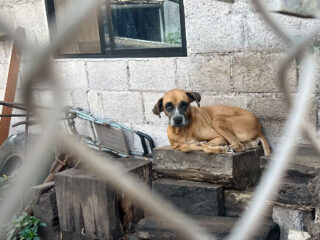
The Scope of the Problem
A 2021 study estimated that about 5,000 dogs and cats live on San Cristóbal Island alone. Determining the exact number of feral cats is more challenging—they roam fields, hide in abandoned buildings, and survive on whatever they can hunt or scraps locals provide. Despite strict regulations, dogs and cats still make their way to the Galápagos—some brought illegally, others transported between islands without approval. Authorities have turned to microchipping to track pets, but enforcing these rules remains challenging.
That’s where World Vets and other veterinary conservation organizations work to manage feral populations and lessen their impact on the fragile wildlife of the Galápagos. Although feral populations are declining, the damage that stray dogs and cats inflict on local wildlife is still evident.
_________________
Threat to Native Species
Free-roaming dogs are known to attack sea lion pups and dig up the eggs of sea turtles and tortoises, further endangering these already vulnerable species. Feral cats pose a similar threat as they hunt small reptiles and nesting birds, many of which are already at risk. To make matters worse, these dogs can carry infectious diseases like distemper and parvovirus, further jeopardizing native species.
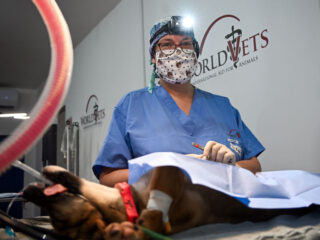
Our Volunteer Work: Controlling Populations
In December 2024, our team from Vista Animal Hospital joined 20 veterinary professionals for a multi-day spay and neuter campaign in San Cristóbal. With donated medical supplies and a shared purpose, we came together for this critical conservation work.
By the end of our campaign, we had completed 112 sterilizations, including spays and neuters for dozens of cats that we ethically trapped, sterilized, and released to help control the feral population and protect the island’s fragile wildlife.
We also provided 22 medical consultations and several critical surgeries. Thanks to the generosity of sponsors, volunteer veterinary professionals, and World Vets, all the care was provided for free.
_________________
Proud Supporter of World Vets’ Work
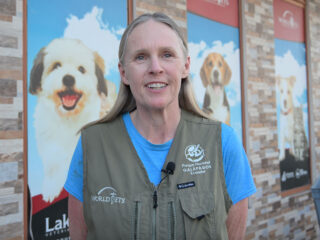
Cathy King, DVM, MS, PhD, is CEO & Founder World Vets. She opened the World Vets San Cristobal hospital in 2021 with the goal to help spay and neuter 100% of the domestic animals there. She’s pleased with the progress in spaying and neutering pets and stray animals. “I feel like we’re maybe a little bit ahead of schedule, being at over 80% already—I feel like that’s pretty good,” she said.
Dr. King added, “We’ve probably had over 5,000 patient visits to the clinic since we opened in November of 2021, and those are any kind of treatment, from simple treatments like parasites to complicated orthopedic surgeries or complicated medical cases.”
Bringing Veterinary Care to Where It’s Needed Most
World Vets is an international nonprofit that provides free veterinary care in underserved communities across 50 countries. Their work isn’t just about treating animals—it’s about public health, conservation, and the connection between people and the animals they care about.
Hard Work, Big Impact
The days were long, the heat relentless, and exhaustion inevitable. But you push through when you’re working for something bigger than yourself. Muscles ached in ways I hadn’t expected, yet the determination in the room was contagious.
Every patient we treated, and every animal we helped reminded us why we were there. In the end, the fatigue faded, but the impact of our work—and the bonds we built—will stay with us forever. What struck all of us was how seamlessly we all came together. It still amazes me that 20-plus strangers collaborated so efficiently. We brought our styles, unique skills, experiences, and personalities, yet we just clicked!
It was a wonderful way to honor my sisters and positively contribute to the world. While it was the trip of a lifetime, I don’t want our impact to end there. I’d like to think of this experience as a new way to bring our community together to positively change the world. This is an opportunity for our staff and clients to engage in good Samaritan work globally.
My goal for 2025 is to establish a fund or nonprofit to support more of these trips and directly assist animals worldwide and the communities that care for them. Yes, that will mean fundraising and asking for donations, but I hope it’s something our community will feel good about supporting.
Team Reflections
 Heidi, Registered Veterinary Technician
Heidi, Registered Veterinary Technician
“This is one of the best experiences of my life—I appreciate the opportunity to visit an amazing place and do some good while there.”
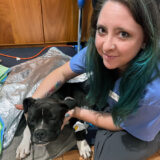 Ambrosia, Veterinary Assistant
Ambrosia, Veterinary Assistant
“This was such a fun and rewarding experience. I’m so grateful for this opportunity and the impact we made.”
 Dr. Carissa Rindal, Veterinarian
Dr. Carissa Rindal, Veterinarian
“It was the trip of a lifetime! Thank you for the opportunity to help with the ecology of the Galápagos and share the experience.”
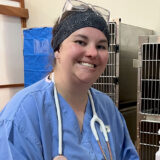 Kaitlyn, Veterinary Assistant
Kaitlyn, Veterinary Assistant
“My animal-loving biologist heart is overflowing with happiness. I am so glad I got to take this trip with such an incredible work family!”
____________
An Experience Like No Other
What would a trip to the Galápagos be without experiencing the incredible wildlife we worked so hard to protect? The Vista Animal Hospital team and fellow volunteers worked long hours there, but we also took time to appreciate the islands’ natural wonders.
We walked alongside ancient, lumbering giant tortoises in their reserves. We snorkeled with sea turtles, hammerhead sharks, and swirling schools of fish, gliding through coral gardens alive with color. We giggled at baby sea lions, playing together and squabbling with hungry siblings competing for their mother’s milk.
Blue-footed boobies captivated us as they bobbled and preened. During another excursion, a small, endangered population of Galápagos penguins reminded us of nature’s fragility. There are fewer than 1,000 breeding pairs left in the world. And then, there was the Galápagos Marine Reserve—a vast, untamed world, a true showcase of evolution in motion.
These moments served as a powerful reminder of why we do this work. Protecting wildlife and fragile ecosystems isn’t just something we should do—it’s something we’re lucky to do. And there are few places on Earth as remarkable as the Galápagos to do it.
____________
Explore the Wildlife from the Galápagos Islands
____________
Vista Animal Hospital Team Volunteering for World Vets in the Galápagos
____________


